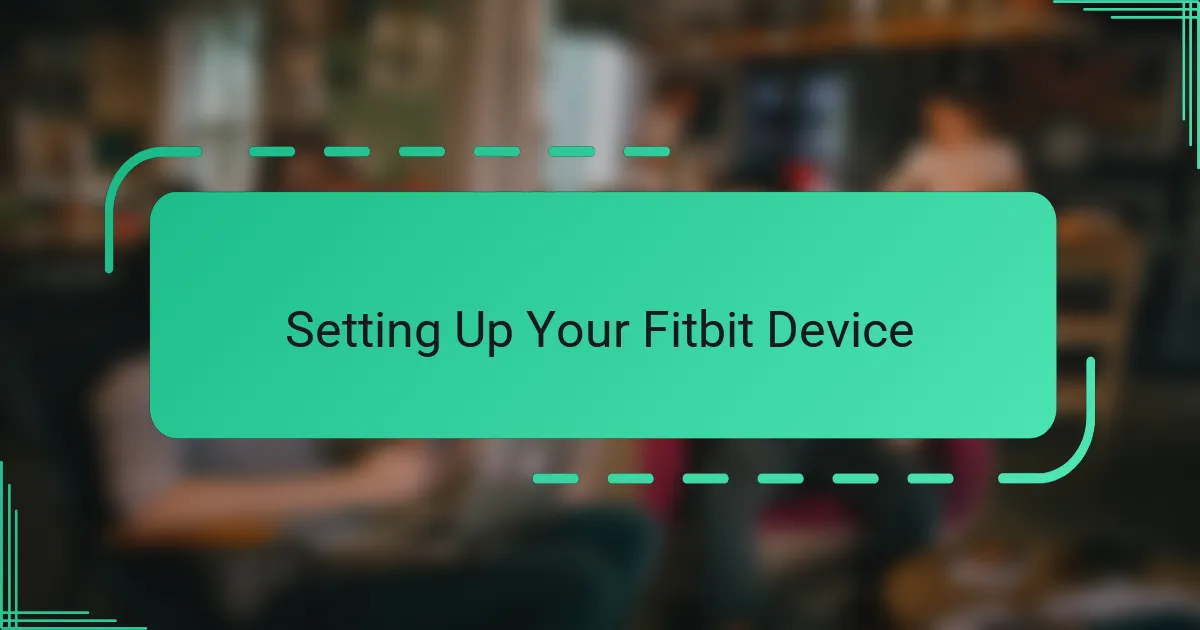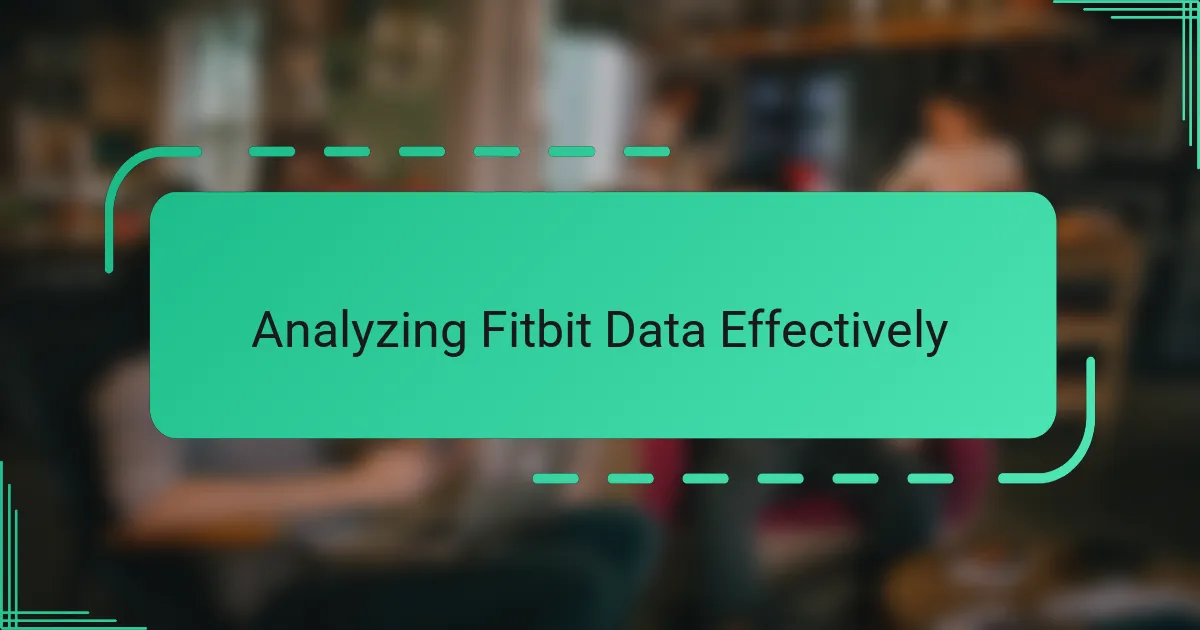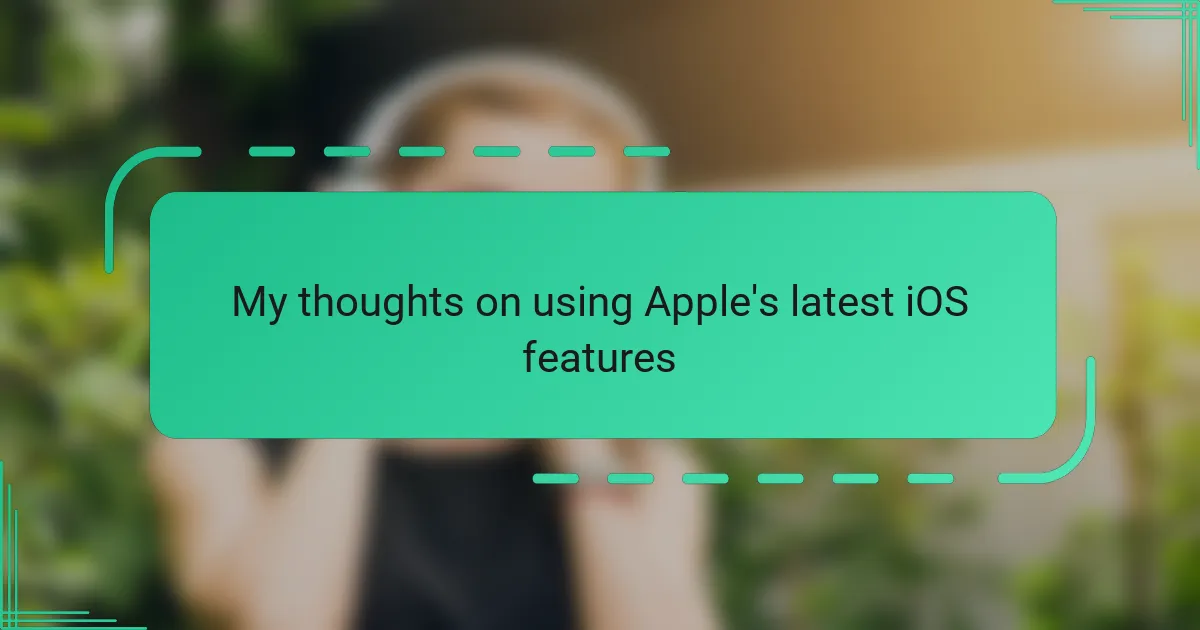Key takeaways
- Fitness tracking technology, like Fitbit, combines sensors and software to monitor physical activity, making wellness insights accessible to everyone.
- Setting up a Fitbit is user-friendly and customizable, enhancing the personal experience by tailoring the device to individual fitness goals.
- Effective analysis of Fitbit data involves recognizing patterns and setting realistic goals, rather than obsessing over specific metrics.
- Challenges include syncing issues and battery life; however, with the right strategies, users can maximize the benefits of their Fitbit experience.
![]()
What is Fitness Tracking Technology
Fitness tracking technology, in my experience, is essentially a combination of sensors and software designed to monitor and analyze various aspects of our physical activity. It’s fascinating how a small device on my wrist can count my steps, track my heart rate, and even analyze the quality of my sleep without me actively thinking about it.
Have you ever wondered how a simple gadget can motivate you to move more or improve your health? For me, fitness trackers like Fitbit bring a sort of friendly accountability—reminding me gently when I’ve been inactive for too long or congratulating me when I hit a new milestone. That blend of data and motivation is what makes this technology so powerful and personal.
What really strikes me is how accessible this technology has become. You don’t need to be a professional athlete to benefit; anyone, from a casual walker to a dedicated gym-goer, can gain insights to better understand their own body and habits. This democratization of health information feels like a game-changer in how we approach wellness.

Overview of Fitbit Features
Fitbit packs quite a bit into a tiny wristwatch. From step counting to heart rate monitoring, it captures a snapshot of your daily activity without needing much input. I was surprised how seamless it felt to just wear it and let the data come to me.
One feature that captivated me was the sleep tracking. Seeing detailed insights about my rest habits made me curious—was I really sleeping well? The gentle nudges to improve my sleep patterns became a quiet but persistent motivator in my routine.
Then there’s the variety of specialized exercise modes. Whether I was walking, biking, or doing yoga, Fitbit adapted to capture what mattered most for each activity. That flexibility made tracking feel personal, not just generic numbers on a screen.

Setting Up Your Fitbit Device
Getting my Fitbit set up was surprisingly straightforward, though I admit I was a bit nervous about syncing it with my phone at first. The app guided me step-by-step, from creating an account to connecting the device via Bluetooth, which made the whole process feel approachable—even for someone who’s not super tech-savvy like me.
One thing that stood out was how customizable the setup was. I could input my personal details—like age, weight, and fitness goals—which instantly made the device feel like it was designed just for me. Have you ever noticed how a gadget becomes more meaningful when it understands your unique needs? That’s exactly how I felt.
Pairing the Fitbit with the app also opened up a world of possibilities, from setting reminders to calibrating the sensors for better accuracy. I remember thinking it was almost like giving this little device a personality, ready to support me on my fitness journey in a way that felt both personal and motivating.

Analyzing Fitbit Data Effectively
When I first started diving into my Fitbit data, I realized that effective analysis isn’t just about looking at numbers—it’s about understanding what those numbers mean for me. Instead of obsessing over every step or calorie, I focused on patterns, like how my activity levels fluctuated during weekdays versus weekends, which helped me identify moments when I needed to push myself a bit more.
One trick I found useful was setting simple, realistic goals based on the data trends Fitbit showed me. For example, noticing my heart rate recovery improved on days I took short walks made me appreciate the small steps toward better fitness. Do you think data alone motivates change? From my experience, it’s the story behind the data that really drives me to keep going.
I also learned that not all data points deserve equal attention. Fitbit tracks a lot—from sleep stages to floors climbed—and prioritizing which metrics matter most to your personal goals can make analysis less overwhelming. Reflecting on what I truly wanted to improve helped me avoid data overload and keep the process manageable and meaningful.

Challenges Faced with Fitbit
One challenge I quickly noticed with my Fitbit was syncing issues. There were moments when the data just wouldn’t update properly, leaving me frustrated and unsure if my efforts were truly being recorded. Have you ever felt that disconnect when technology seems to stall your progress? That glitch, although temporary, made me realize how much I rely on seamless integration to stay motivated.
Battery life also proved to be a bit of a hurdle. I found myself charging the device more often than I expected, especially after long days filled with multiple workouts and sleep tracking nights. It made me wonder if the convenience of wearing something all day might sometimes come at the cost of frequent recharging.
Lastly, the accuracy of certain metrics like heart rate and calorie burn wasn’t always consistent. At times, the numbers seemed off compared to how hard I felt I was working. This inconsistency sparked some skepticism in me—how much can we trust these trackers? Despite these bumps, I learned to take the data as helpful guidance rather than absolute truth, adjusting my expectations along the way.

Tips for Maximizing Fitbit Benefits
One tip that really changed the way I used my Fitbit was setting personalized reminders. Instead of generic alerts, I tailored them to fit my daily routine—like nudging me to stand up after long stretches of desk work. These little prompts made a surprisingly big difference in keeping me active without feeling nagged.
Another strategy I found effective was syncing my Fitbit data with other health apps. At first, I didn’t realize how combining insights from nutrition and hydration trackers could paint a clearer picture of my overall wellness. Have you tried cross-referencing your fitness data? I think connecting the dots this way adds depth to what Fitbit alone can tell you.
Lastly, I can’t stress enough the value of reviewing your progress regularly but with a balanced mindset. It’s tempting to obsess over every number, but I learned to celebrate small victories and adjust goals gradually. Trusting the process and being patient turned Fitbit into a supportive coach, not just a device. Have you noticed how a little perspective shifts motivation? For me, that made all the difference.


